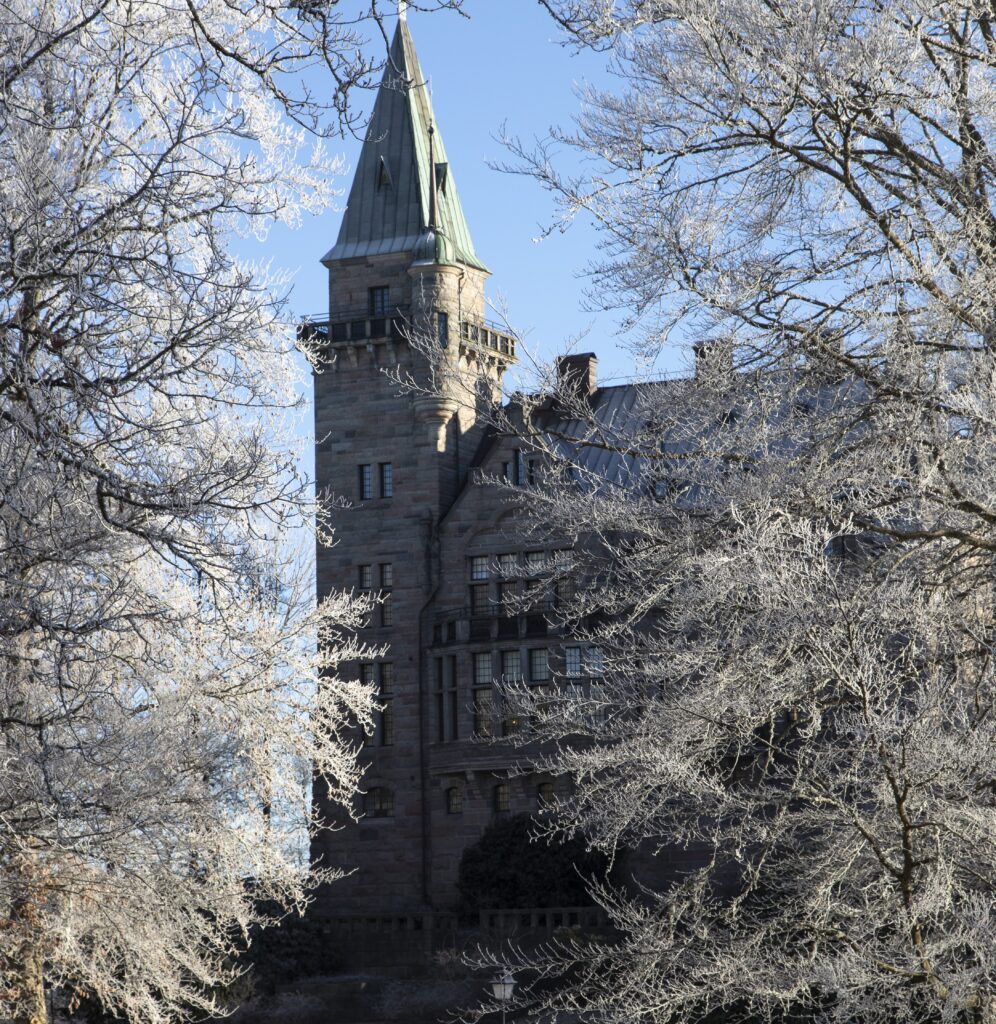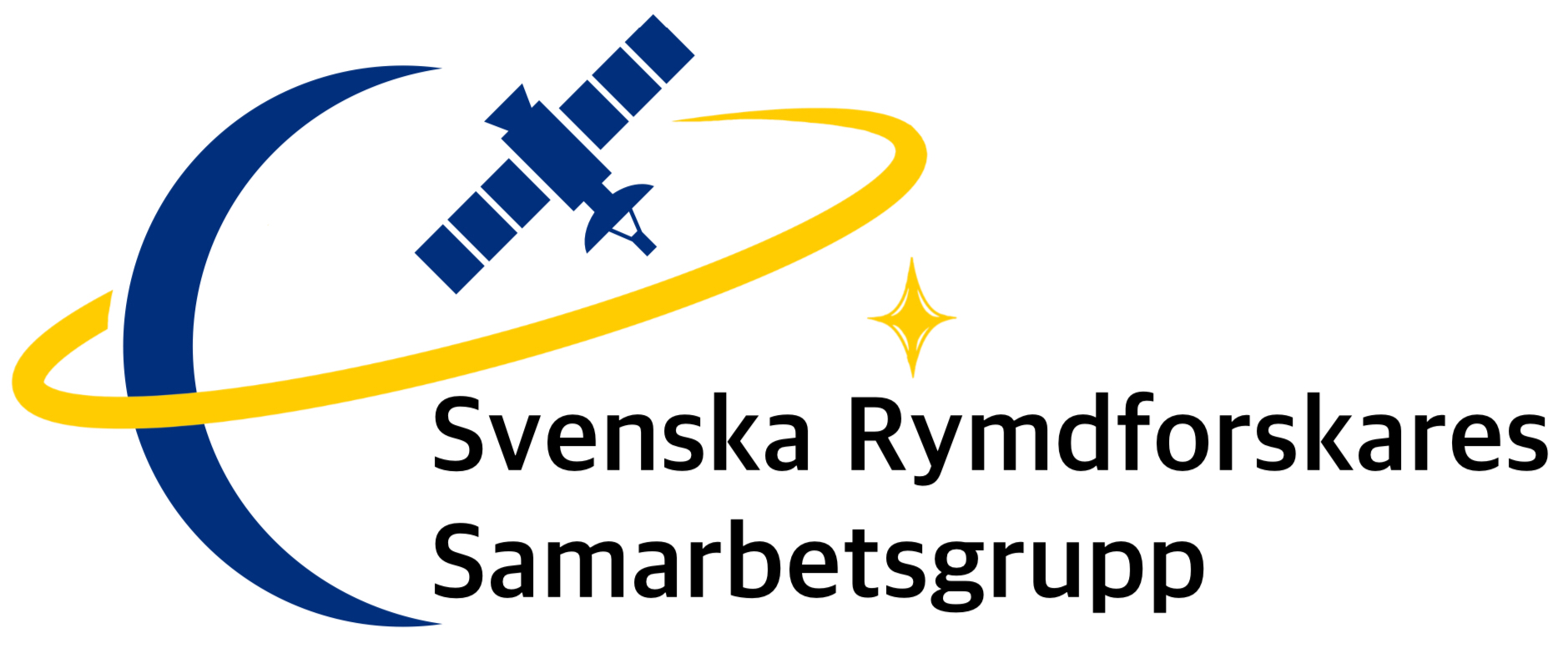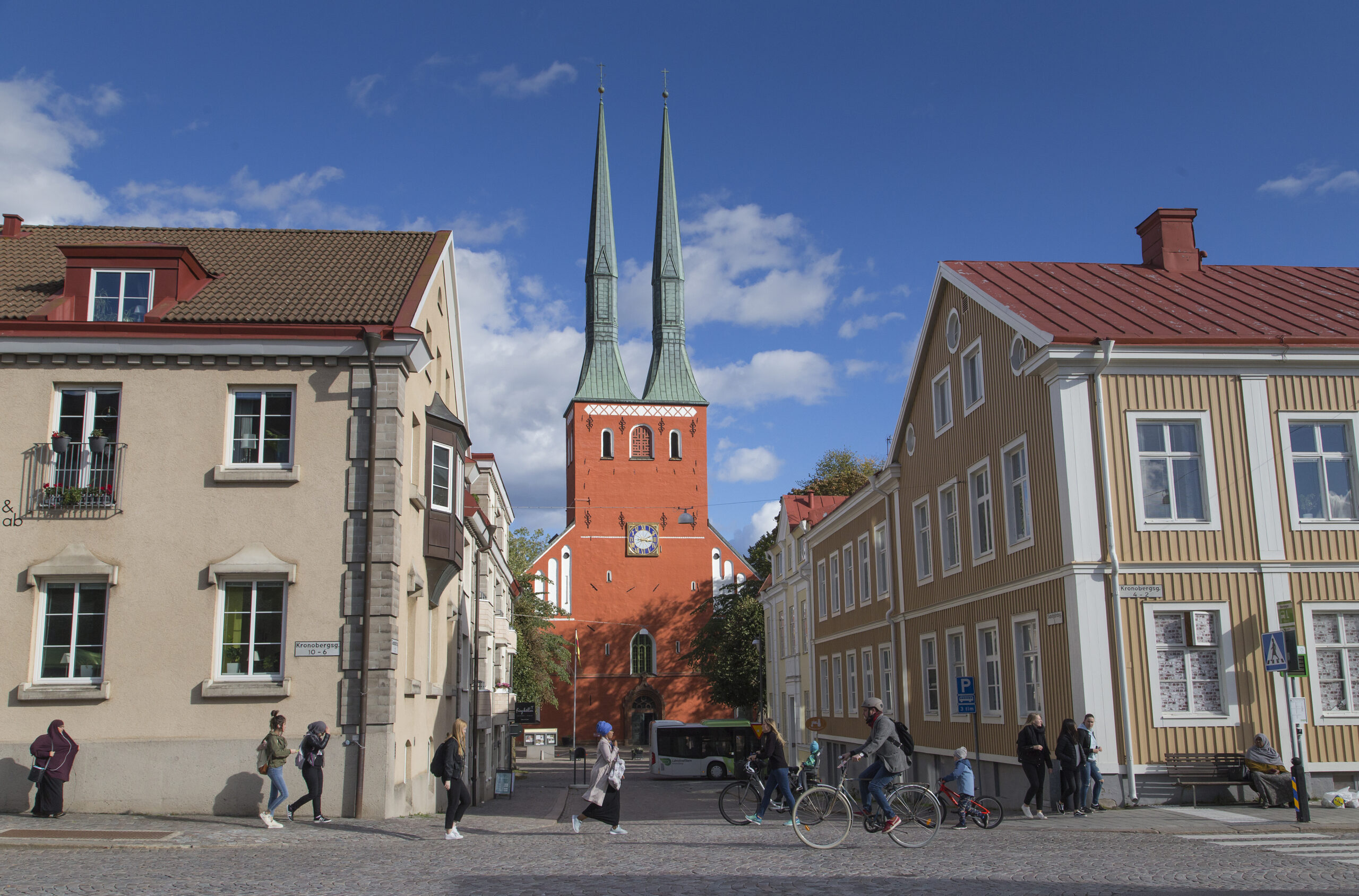SRS Conference 2024, Växjö

Svenska Rymdforskares Samarbetsgrupp (SRS) holds a national conference every year. The SRS Conference 2024 will be hosted by Linnaeus University in Växjö. The meeting will begin after lunch on March 20 and finish by 15:00 on March 21, 2024. The local organizing committee is now inviting and welcoming you to Växjö. We are looking forward to hosting you at our beautiful campus and to creating a successful and inspiring SRS Conference 2024 together.
The SRS Conference 2024 covers a large range of space science related areas carried out by scientists and technicians working at various Swedish universities and institutes. The format includes invited talks, an open poster session, the formal SRS annual meeting as well as information and discussions on research funding opportunities and research related news from ESA and EU. The conference is open to everybody, and there is no registration fee. All who register before the deadline are invited to the free conference dinner on the evening of the first day.
SNSA will support travel and accommodation expenses for up to four PhD students who would like to participate in the conference. A condition for support is that the students must present their research results or research plans on a poster. Students who are interested can apply for support by replying to the following call: Stöd till resor och evenemang – Rymdstyrelsen, with a deadline on March 10. In case of questions or problems applying in the Prisma system, please contact Vilgot Claesson.
For questions regarding the conference, please contact Maria Hamrin, Johan Fransson or Diana Unander

For questions regarding SRS, please contact the present chair, Maria Hamrin
Program, March 20, Wednesday
Introduction and Information
13.00 – 13.10: Welcome and practical information – Dean Jesper Andersson, Johan Fransson, Linnaeus University
13.10 – 13.15: Introduction to the SRS 2024 Conference – Maria Hamrin, Umeå University
13.15 – 14.00: Astronomy – Chair: Felix Ryde
Exploring the atmosphere of a hot rocky exoplanet using the James Webb Space Telescope
Alexis Brandeker, Stockholm University
The hidden dimension – star formation in 3D with Gaia
Jouni Kainulainen, Chalmers University of Technology
14.00 – 14.45: Space Plasma – Chair: Anders Tjulin
EISCAT_3D: The next generation European Arctic geospace radar
Anders Tjulin, EISCAT
High-latitude aurora during extended periods of northward IMF
Anita Kullen, KTH Royal Institute of Technology
14.45 – 15.15: Coffee Break
15.15 – 16.00: Atmospheric Physics – Chair: Jörg Gumbel
Synergy of space- and ground-based methods for the global observation of volcanic activity
Santiago Arellano, Chalmers University of Technology
The Barium Radio and Optical Rocket (BROR) experiment: The first results
Tima Sergienko, Swedish Institute of Space Physics
16.00 – 16.45: Space Physiology and Microgravity – Chair: Rodrigo Fernandez-Gonzalo
Combined exercise and artificial gravity during future manned space flights
Dag Linnarsson, Karolinska Institutet
Examining insects as food for long spaceflights and colonization
Åsa Berggren, Swedish University of Agricultural Sciences
16.45 – 17.00: Break
17.00 – 17.30: SRS Annual Meeting – Please see separate agenda
SRS Annual Meeting, Maria Hamrin/Johan Fransson. Meeting agenda.
Please, see the archive for the minutes from previous annual meetings.
Names and contact to the current election committe can be found here.
17.30- 17.45: Poster Pitches
Poster pitches, ca 1 min/presentation
Architectural Properties’ Impact on Stress and Cognition – Amethodology used on ground and in Space
Michail Magkos, KTH Royal Institute of Technology
Chalmers Exoplanet Group
Malcolm Fridlund, Chalmers University of Technology
The CHEOPS mission
Judith Korth, Lund University
The formation of transiting circumplanetary debris discs from the disruption of satellite systems during planet-planet scattering
Alexander Mustill, Lund University
Cold methanol formation ladder: focus on radicals
Anna Punanova, Onsala Space Observatory, Chalmers University of Technology
FENRIR
Claudia Buck, FENRIR
Can a relationship between conflict and fire be found using remote sensing?
Wan Ni Li and Lovisa Rosenquist Ohlsson, Lund University
Magnetisation of radio relics and search for dark matter
Oindrila Ghosh, Stockholm University
Role of the actin cytoskeleton in T cell activation in microgravity
Evangelos Doukoumopoulos, Karolinska Institutet
The Effects of Microgravity on Stem Cells
Lukas Zeger, Uppsala University
The MATS Satellite Misson – An Update
Jörg Gumbel, MISU, Stockhholm University
Advancing Forest Attribute Prediction Using Machine Learning Techniques
Shafiullah Soomro, Linnaeus University
17.45 – 18.45: Poster exhibition and snacks
Posters
18.30 – 19.00: SRS Panel (only) meeting
SRS Panel (only) meeting
19:15: Dinner
Dinner at Teleborg Castle
Program, March 21, Thursday
08.30 – 08.35: Introduction and Information
Welcome and practical information – Johan Fransson, Linnaeus University
08.35 – 09.20: Solar System – Chair: Mats Holmström
From crème brulée to puff pastry – crunch time for solid surfaces in the solar system
Axel Hagermann, Luleå University of Technology
All eyes on Io: Observations of Jupiter’s volcanic moon during the Juno spacecraft flybys
Lorenz Roth, KTH Royal Institute of Technology
09.20 – 10.05: Astrobiology – Chair: Natuschka Lee
The evolution of complexity
Jessica Abbot, Lund University
EAI – a new European initiative for promoting research, training and public engagement in astrobiology
Wolf Geppert, Stockholm University
10.05 – 10.30: Coffee Break
Coffee break
10.30 – 11.15: Earth Observations – Chair: Johan Fransson
Baltic Sea – past, present and future
Susanne Kratzer, Stockholm University
Hunting insects from space – remote sensing of forest disturbances
Per-Ola Olsson, Lund University
11.15 – 11.25: Quick Talks (2×5 min) – Chair: Maria Hamrin
Energy balance of sunspots and their geometrical topology
Ana Belén Griñon Marín, Stockholm University
Integrated and consistent ocean variables for improved satellite-based air-sea flux estimates
Anis Elyouncha, Gothenburg University
11.25 – 11.30: Announcement of poster awards
Announcement of poster awards
11.30 – 12.30: Lunch Break
Lunch break
12.30 – 13.15: Space sciences in Sweden – Chair: SRS Panel
Discussions on funding strategies with invited representatives from Swedish funders.
13.15 – 13.45: SNSA Information –
Chair: Per Magnusson, Kristine Dannenberg, Vilgot Claesson and Kristell Pérot
Research funding opportunities at Rymdstyrelsen (SNSA), research related news from European Space Agency (ESA) and EU
13.45 – 14.00: Short Break
14.00 – 14.50: Greetings from space!
14.00-14.10: Christer Fuglesang, via video
14.10-14.40: Marcus Wandt, via video
14.50 – 15.00: Closing words (SRS and LNU)
15.00: Grab and go coffee
Participants
To be announced.
Venue
The conference will be held in the forests of Småland at Linnaeus University in Växjö.
The location for the conference is in the IKEA-hall in the N-building. For more information about the location see the campus map.
Call for posters
A poster session will be organized as part of the SRS Conference 2024. The session with short pitch-presentations about the poster will take place Day 1, but the posters should be visible during both days during the breaks. There will be an award for the best poster, and the conference participants will throughout the conference get a chance to vote for the best poster.
You sign up for presenting a poster in the registration form.
The poster should be in A1 format – you can either print the poster yourself and bring to the conference or send it to [email protected] by March 13, 2024 in order to be printed and ready on time.
Travel to Växjö
There are a number of different ways to travel to Växjö. You can either take the train to Växjö Central or travel by air to Växjö Småland Airport.
If you travel by train to Växjö you will reach Växjö Central located in the city centre. Travelling by train from Stockholm Central to Växjö Central takes roughly 3.5 hours.
If you instead choose to travel by air, you can choose to travel either from Bromma Stockholm Airport or Amsterdam Airport Schiphol to Växjö Småland Airport. You can also reach Växjö via flight to Copenhagen Airport/Kastrup and connecting direct train to Växjö Central (roughly 2.5 hours).
Travel in Växjö
For travel from Växjö Central or Växjö Småland Airport to Linnaeus University we recommend either bus or taxi.
By bus
When travelling by bus from Växjö Central to Linnaeus University, bus number 3, direction “Universitetet”, is the best option. However, there are also other bus routes that pass by one of the university’s bus stops or bus stops nearby, for instance, route number 1 and 5, which take you to Teleborg Centrum, some 8–10 minutes’ walk from the university’s campus.
Bus number 4 will take you from Växjö Småland Airport to Växjö Central where you can change to bus to get to Linnaeus University.
Bus tickets are purchased either on the bus with a debit card or you can download the travel app “Länstrafiken Kronoberg” and purchase your ticket in the app, which will give you a 10% discount on your ticket. You use your debit card to pay in the app.
Click here to perform a search on Länstrafiken Kronoberg.
By bicycle
In case you prefer a bicycle, many hotels can offer this. It takes roughly 20 minutes with a bicycle from the city centre to Linnaeus University’s campus.
By taxi
Most taxi companies start from Södra Bantorget at World Trade Center which means you can find available taxis here.
By car
There is a relative shortage of parking spaces on campus and all are subject to a charge. Parking spaces are marked on the map below.
Click here to find more information about Linnaeus University in Växjö.
The local organizing committee (LOC) are Johan Fransson and Diana Unander
The scientific organizing committee (SOC) are Maria Hamrin, Natuschka Lee, Felix Ryde, Jörg Gumbel, Johan Fransson, Rodrigo Fernandez-Gonzalo, Mats Holmström, Anders Tjulin
This page was last updated on March 19, 2024.

